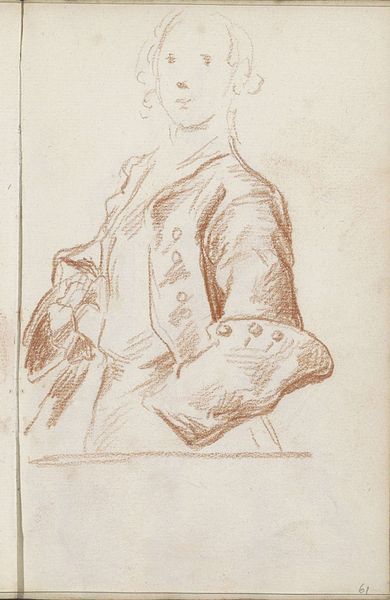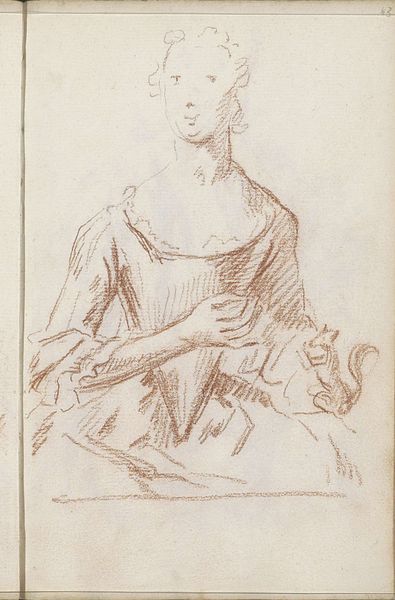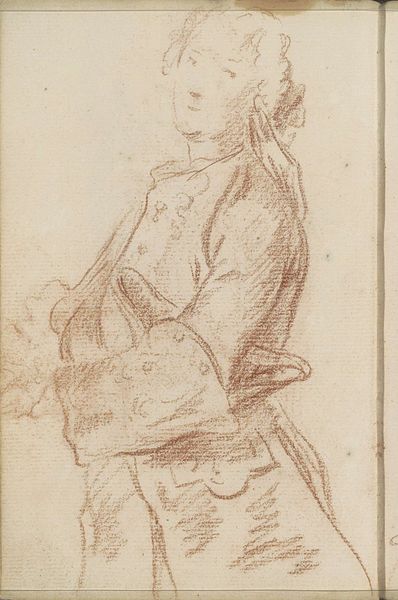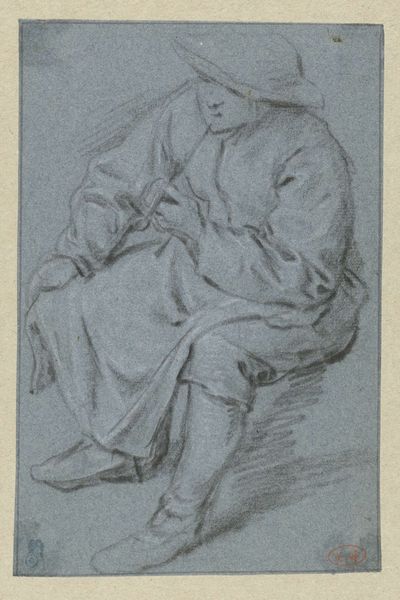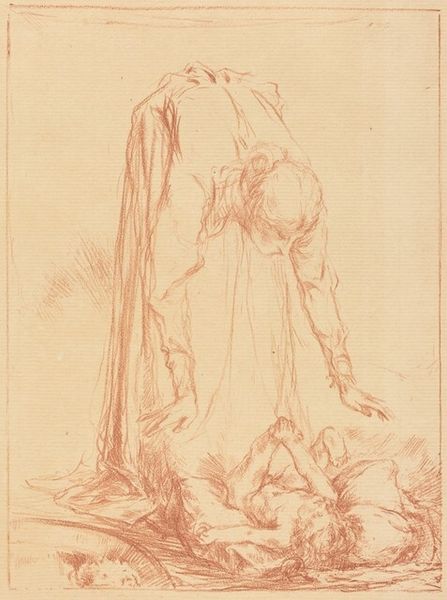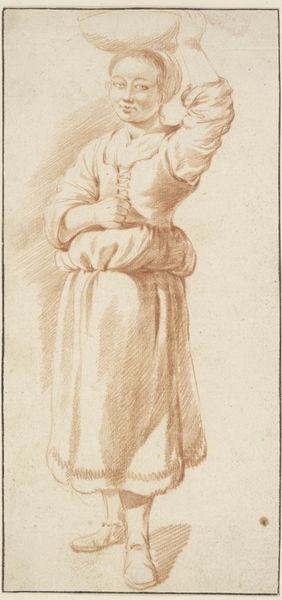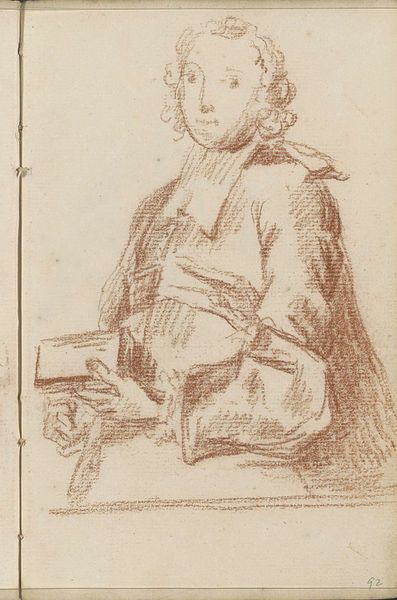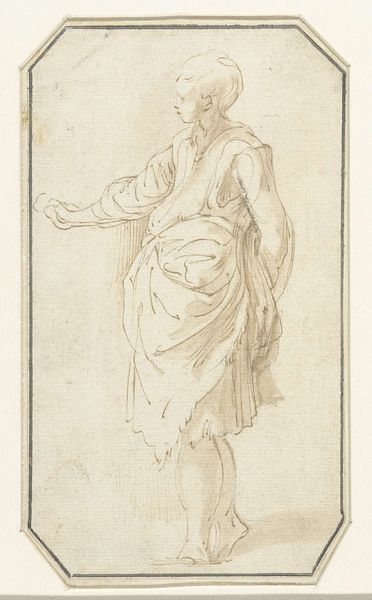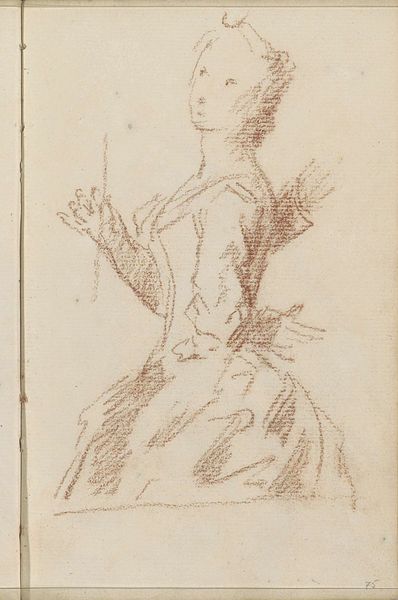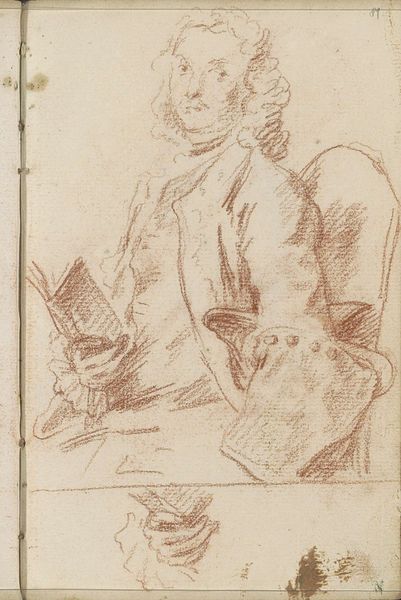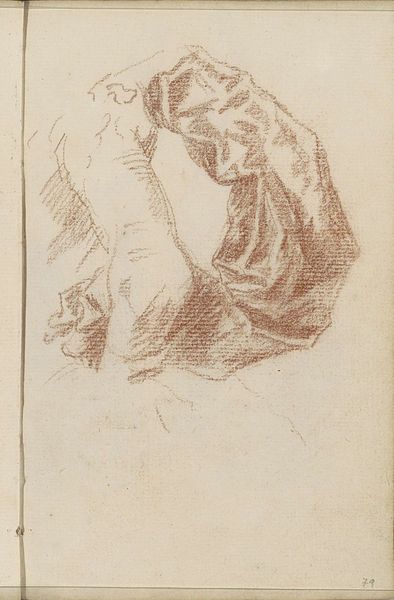
drawing, pencil
#
portrait
#
drawing
#
baroque
#
pencil sketch
#
figuration
#
pencil
#
portrait drawing
Copyright: Rijks Museum: Open Domain
Curator: Welcome. We're looking at a pencil drawing titled "Standing Man in a Draped Coat," by Petrus Johannes van Reysschoot, likely created sometime between 1710 and 1772. Editor: There's a remarkable immediacy to the drawing; it captures a fleeting moment. The composition feels both classical and spontaneous. The subject's pose, and the fall of the drapery… It’s all very dynamic. Curator: The medium speaks to this spontaneity as well. Pencil allowed Reysschoot to rapidly capture light and shadow. The very availability of such materials broadens the possibility of artmaking within society. The production is no longer relegated only to formal studios and specialized equipment. Editor: The lines, the texture... It is really a feast for the eyes! I am particularly drawn to the way the drapery folds around the figure. Note the semiotic function of those repeating, cascading lines. They don’t just represent fabric; they connote a certain gravity, almost solemnity. Curator: Right, and drapery held specific meaning within the 18th century's artistic and social structure. It served not just as a covering but signaled social status, trade, and political affiliation. Here, the material itself, most probably linen or wool, shows an availability of resources indicating status for both sitter and artist. Editor: True, yet it's the universality of the pose that captures me. Even absent context, it suggests a pensive introspection. Structurally, this work adheres to certain formal principles of Baroque portraiture. And you can also glimpse Neoclassical ideals gestating beneath it. The use of line over heavy shadow speaks of this move. Curator: Consider, too, where Reysschoot might have worked. Was he an independent artist selling to wealthy patrons, or part of an academic system producing portraits for official use? Who were his suppliers? These aspects deeply informed the art's creation and dissemination. And who was the sitter? What can he tell us about societal consumption in 1700's? Editor: Absolutely. Though, looking at the face again, the soft strokes communicate more than just a physical likeness; they almost suggest something about the sitter’s internal state. A sense of quiet contemplation... I come away pondering the expression in a similar, reflective manner. Curator: Ultimately, understanding how these raw materials translated into an expressive artwork can bridge gaps between past craftsmanship and present appreciation. The accessibility of drawing makes it uniquely democratic and a vital medium to appreciate from both artistic and social history standpoints. Editor: Indeed. It’s an exceptional example of how formal structure and aesthetic values can transcend time, evoking deep feelings of humanity even today. Thank you.
Comments
No comments
Be the first to comment and join the conversation on the ultimate creative platform.


